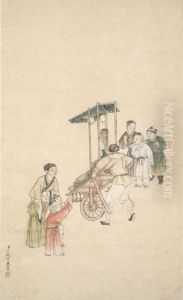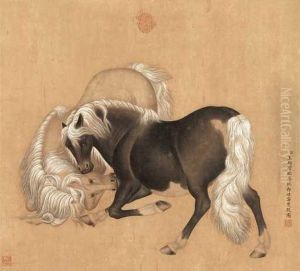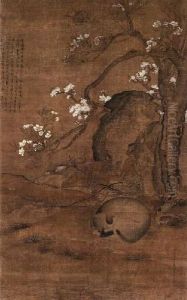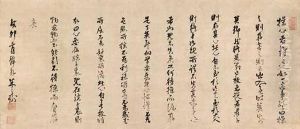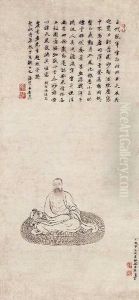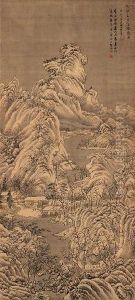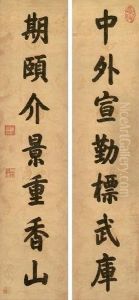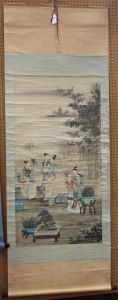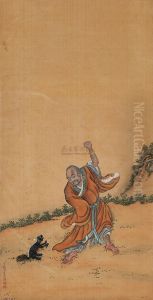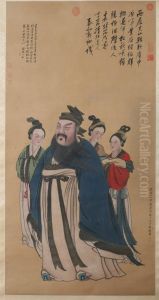Ding Guanpeng Paintings
Ding Guanpeng was a prominent Chinese painter active during the Qing dynasty, particularly renowned for his traditional Chinese paintings. Although the exact dates of his birth and death are not precisely known, it is generally believed that he was most active in the mid-18th century, with his death estimated around circa 1771. Ding Guanpeng's work primarily falls within the category of court painting, a testament to his role as a court painter for the Qianlong Emperor, one of the most celebrated patrons of the arts in Chinese history.
Ding Guanpeng's artistry is distinguished by his adeptness in both figure and religious painting, showcasing a mastery over intricate details and a profound ability to convey philosophical and spiritual depth. He was particularly skilled in depicting Buddhist and Daoist deities, contributing significantly to the visual representation of these religious figures during his time. His paintings not only reflect the technical proficiency expected of court painters but also exhibit a unique blend of traditional Chinese painting techniques with influences from Western art, a trend that was emerging in Qing dynasty China as part of the Qianlong Emperor's broader engagement with diverse cultures.
Despite Ding Guanpeng's significance in the realm of Chinese art, detailed records of his life remain scarce, and much of what is known comes from the study of his surviving works and historical mentions in court records. His contributions to Chinese art, especially in religious and figure painting, remain influential, highlighting his role in the evolution of Chinese painting during the Qing dynasty. His works are prized for their historical and artistic value, offering insight into the cultural and religious life of Qing dynasty China as well as the cross-cultural exchanges that characterized the period.
